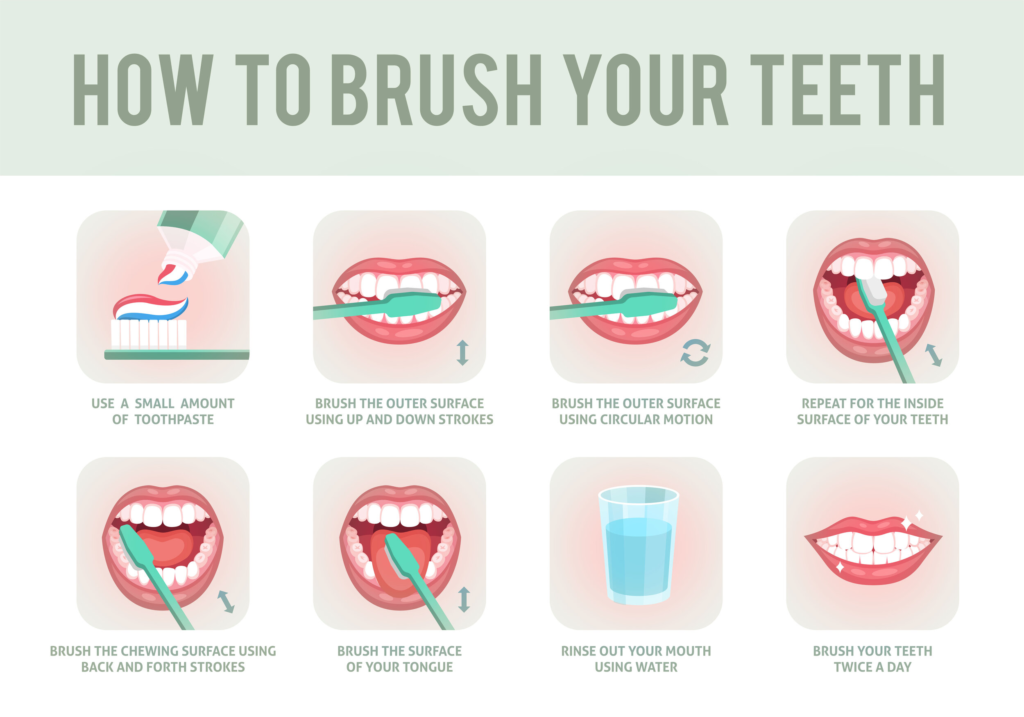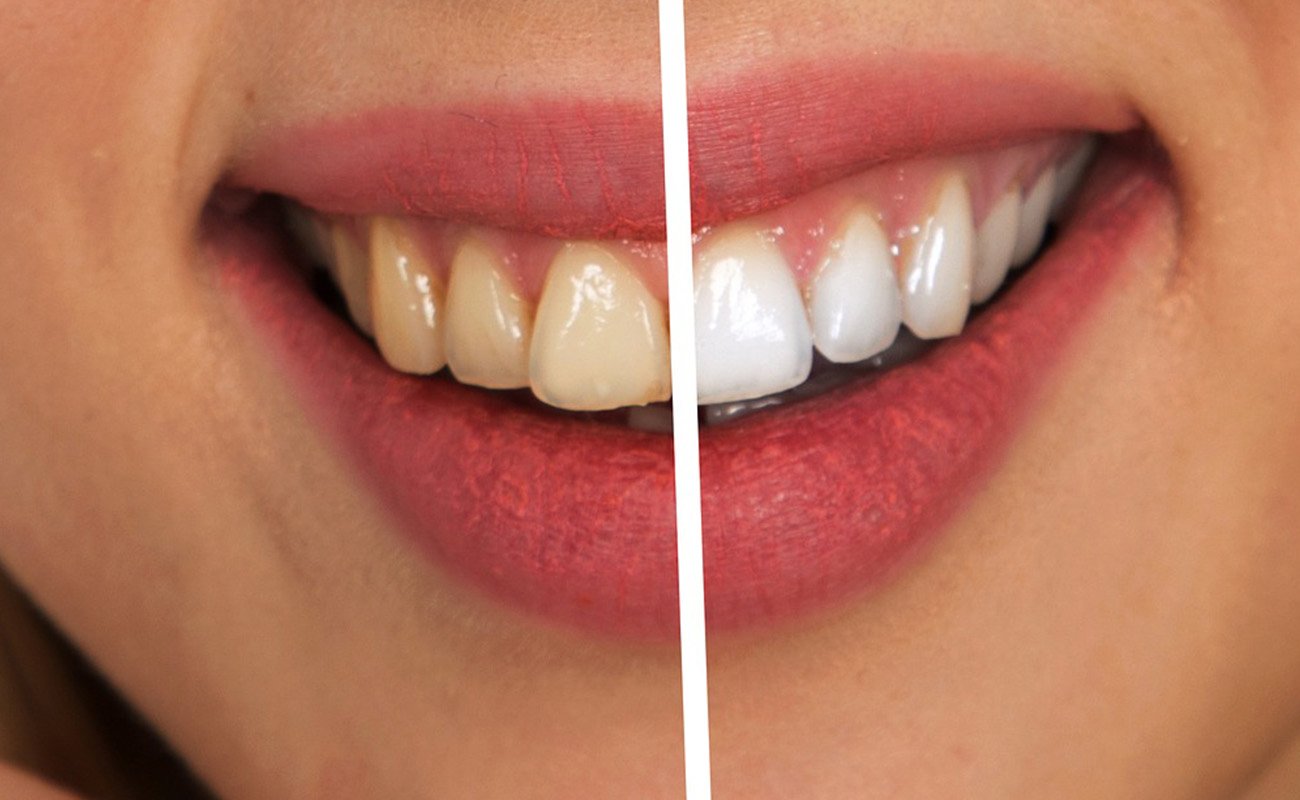Have your teeth started turning yellow during or after Invisalign treatment? You’re not alone. Many patients are surprised to find their formerly white and bright smile looks duller and more yellow-toned after using clear aligners. Even if you carefully brush and floss around your Invisalign trays, drink coffee, tea, and red wine through a straw, and avoid curry and other staining foods, discoloration is still common over the months of treatment.
This article will explore the potential problems that stem from improper maintenance of aligners and provide advice on how to prevent tooth discoloration from aligners. With a few simple lifestyle adjustments, you’ll be able to achieve optimal oral health with a perfect smile, without any unnecessary yellowing.
Why Can Teeth Become Yellow with Invisalign?
Teeth may become yellow during or after Invisalign treatment for a variety of reasons linked to the nature of the aligner trays themselves. The plastic trays fit closely around the teeth, creating a prime environment for stains to take hold. Food particles, beverages, and plaque can easily get trapped around and underneath the edges of the trays. These are areas that regular brushing and flossing might not sufficiently reach to clear away the accumulated debris.
Furthermore, inadequate cleaning of the trays can allow bacteria to thrive around the teeth and along the gumline underneath the Invisalign trays. These bacteria can produce yellowish acidic byproducts that penetrate the porous outer layer of the tooth enamel, leading to discoloration. In addition to these factors, the constant pressure applied by the trays to the teeth — necessary for around 22 hours a day — can effectively “press” these stains into the tiny fissures in the enamel, gradually dulling the teeth’s natural white hue.
Even for patients who are meticulous with their oral hygiene, brushing and flossing diligently, and soaking their aligners regularly, a gradual yellowing effect on the teeth might still be noticeable over time.
See our article: Can You Drink Coffee With Aligners?
How to Prevent Teeth Discoloration With Aligners and Invisalign?
Maintaining the natural whiteness of your teeth while undergoing treatment with aligners or Invisalign requires a proactive approach to oral hygiene and lifestyle choices. You can adopt several effective strategies to minimize the risk of teeth discoloration and ensure your smile remains bright throughout your orthodontic journey. Here, we’ll explore key tips and practices that can help you prevent staining and keep your teeth looking their best while using aligners.
Maintain Good Oral Hygiene
Proper daily tooth brushing and cleaning is key for reducing the potential for teeth to yellow with Invisalign treatment. Patients should brush their teeth gently yet thoroughly with a soft-bristle toothbrush and fluoride toothpaste after every meal before inserting aligners. Scrubbing should include all tooth surfaces – especially along the gumlines where plaque bacteria often accumulate.
Flossing daily and using an interdental brush to deeply clean between teeth and just underneath the gums can also greatly minimize the risk of discoloration. These areas below the gumline are common spots for stains to build up over weeks and months of Invisalign use.
Ensuring food debris and bacteria are removed from the teeth themselves every day keeps staining to a minimum during treatment.

Keep Your Aligners Clean
In addition to careful brushing and flossing, it is imperative to keep Invisalign trays themselves clean in order to avoid teeth discoloration. Patients should gently brush aligner trays inside and out with a soft-bristle toothbrush and non-abrasive toothpaste every time they remove them. This scrubs away debris, plaque, stains, and bacteria that accumulate on the smooth plastic surfaces from wear.
For deeper cleaning, trays can be periodically soaked in denture cleaners, vinegar water mixtures, or specialty Invisalign cleaning crystals dissolved in water. These solutions bubble away residue buildup inside the aligners that might otherwise transfer to teeth over time.
Additionally, patients can ask their dentists or orthodontists about using an ultrasonic cleaner that vibrates trays in a cleaning solution to loosen stubborn plaque and stains.
Remove Your Aligners Before Eating or Drinking
Another simple yet vital way patients can prevent teeth from yellowing with Invisalign is to remember to always remove aligner trays when consuming food or beverages other than cool water.
The aligners trap bits of staining foods around teeth, allowing pigments, oils, and acids to imprint on enamel over time. Things like coffee, tea, red wine, curry sauces, tomatoes, berries, and more can quickly build up, dulling tooth color. Additionally, sugars and acids in foods soften tooth enamel so it is more prone to permanently absorbing such staining particles.
Removing the Invisalign trays during meals and snacks avoids excessive contact between tooth surfaces and colorants. While some staining and demineralization might still occur even when minimizing aligner wear time for eating, removing the plastic trays provides a greater opportunity to promptly brush and floss away food debris before residue permanently sticks.
See our article: Can You Eat with Clear Aligners?
Keep Your Aligners Safe
To prevent aligner trays from inadvertently staining teeth during Invisalign treatment, it’s critical to store them safely as well. Patients should always rinse aligners clear of any debris and leftover toothpaste before inserting them in a protective case.
Never wrap or store Invisalign trays in paper napkins or towels, as fibers can cling to the plastic and then transfer to teeth. It’s also important not to keep aligners in heat-trapping environments like hot cars, as high temperatures can warp the plastic so it no longer fits correctly against teeth. Ill-fitting trays are then more likely to accumulate more food particles against teeth over time.
Additionally, patients shouldn’t soak aligners in drinks other than water or recommended cleaning solutions, as harsh dyes from coffee, tea, wine, and other beverages will impart permanent staining. By properly rinsing and storing trays between wears in the provided Invisalign case, discoloration risks are minimized.
Visit your Dentist Regularly for Professional Dental Care
Even with diligent at-home oral hygiene and aligner cleaning, visiting the dentist every 6 months for a professional cleaning is critical for Invisalign patients hoping to avoid tooth discoloration or decay. More frequent hygiene appointments may even be recommended during active treatment. The dentist can use specialized tools to remove built-up biofilm, plaque, and tartar in tricky spots around the teeth and along the gumline that daily flossing and brushing at home might miss. These areas often harbor staining bacteria.
Additionally, the hygienist will polish away stubborn surface stains on enamel using prophy paste and mini rubber cup attachments. Polishing smoothes microscopic pits and fissures in enamel to prevent deeper penetration of stains over time. Furthermore, the dentist can monitor for potential signs of decay accelerated by aligners, catching cavities early before they require invasive fillings.
Avoid Smoking
Patients must avoid smoking cigarettes or other tobacco products while undergoing teeth straightening with Invisalign. The tar, nicotine, and various toxic chemicals in both firsthand and secondhand cigarette smoke are incredibly staining, rapidly yellowing tooth enamel after accumulating on surfaces. And the longer teeth are exposed to cigarette staining compounds, the deeper and more permanently the discoloration binds.
Additionally, smoking severely irritates gums and damages oral tissues, allowing more stain-causing bacteria to penetrate around the teeth. Given Invisalign aligner trays are worn 22 hours a day for months at a time, often longer with additional refinement treatments, any smoking introduces concentrated staining risks. The plastic also absorbs and traps stale smoke smells against the teeth. Protecting teeth from smoking-related discoloration requires quitting completely through programs, nicotine alternatives, or willpower.
See also: Smoking with Braces
Worth Knowing
The World Health Organization reported that in 2020, 22.3% of the global population were tobacco users, with the breakdown showing 36.7% of men and 7.8% of women engaging in tobacco use.
Whitening Teeth with Aligners and Invisalign
Many people wonder if whitening their teeth while wearing aligners is possible, and the answer is generally yes. However, it’s important to keep in mind that the whitening process can only be done after consulting with your dentist and receiving their approval. This is because certain types of teeth whitening products can interfere with the alignment process of your aligner treatment. Your dentist may recommend a specific type of whitening product that is safe to use with clear aligners or suggest waiting until after your treatment is complete to undergo teeth whitening.
See our reviews of the best whitening products
Moon Whitening Device is a rapid and effective teeth-whitening solution, capable of achieving up to 12 shades of whitening in two weeks with five-minute daily sessions. It’s user-friendly, featuring a lightweight, wireless, and water-resistant design, and comes with peppermint-flavored dissolving whitening strips. The device is gentle on tooth enamel and is clinically proven and dentist-approved. See our review of Moon Teeth Whitening Device.
No products found.
Snow Magic Teeth Whitening Strips offer an eco-friendly solution for a brighter smile with their unique self-dissolving feature, eliminating the need for plastic backings. Available in 28 or 56 packs, they come with a 60-day money-back guarantee and are the top-selling whitening product in stores like Neiman Marcus and Macy’s. See our review of Snow Magic Teeth Whitening Strips.
No products found.
Spotlight Teeth Whitening Strips offer easy, dentist-designed whitening with clinically proven results. They’re free from harmful chemicals, vegan, cruelty-free, and come in recyclable packaging. Each pack includes a gum oil pen to reduce sensitivity, and the strips have a refreshing spearmint flavor. See our review of Spotlight Teeth Whitening Strips.
No products found.
Frequently Asked Questions
How Do I Keep My Teeth White with Invisalign?
You should brush and floss your teeth at least twice a day to remove food and plaque buildup and ensure that you get rid of bacteria that can discolor your teeth.
You should also avoid consuming drinks that stain your teeth, such as coffee and tea, as well as acidic foods like citrus fruits whilst wearing your Invisalign.
What Happens if I Don’t Clean My Teeth Before Putting Invisalign Back?
Bacteria can build up in your mouth much faster when you don’t brush before wearing your aligners, and this can lead to an increased risk of infection and even tooth decay.
Not only this, but the aligners themselves may suffer from damage too if not enough plaque has been removed.
Sources
Un-Bong Baik, Hoon Kim, Hwa-Sung Chae, Ji-Yun Myung, Youn-Sic Chun, Teeth discoloration during orthodontic treatment. Korean J Orthod. 2017 Sep; 47(5): 334–339. DOI: 10.4041/kjod.2017.47.5.334. Available online at: https://www.ncbi.nlm.nih.gov/pmc/articles/PMC5548714/
Maierdanjiang Rouzi, Xiaoqi Zhang, Qingsong Jiang, Hu Long , Wenli Lai , Xiaolong Li, Impact of Clear Aligners on Oral Health and Oral Microbiome During Orthodontic Treatment. International Dental Journal Volume 73, Issue 5, October 2023, Pages 603-611. DOI: 10.1016/j.identj.2023.03.012. Available online at: https://www.sciencedirect.com/science/article/pii/S0020653923000655
S Petti, E Barbato, DA Simonetti, Effect of orthodontic therapy with fixed and removable appliances on oral microbiota: a six-month longitudinal study, New Microbiol, 20 (1) (1997). Available online at: https://pubmed.ncbi.nlm.nih.gov/9037669/
AJ Ireland, V Soro, SV Sprague, The effects of different orthodontic appliances upon microbial communities, Orthod Craniofac Res, 17 (2) (2014). DOI: 10.1111/ocr.12037. Available online at: https://pubmed.ncbi.nlm.nih.gov/24345204/

